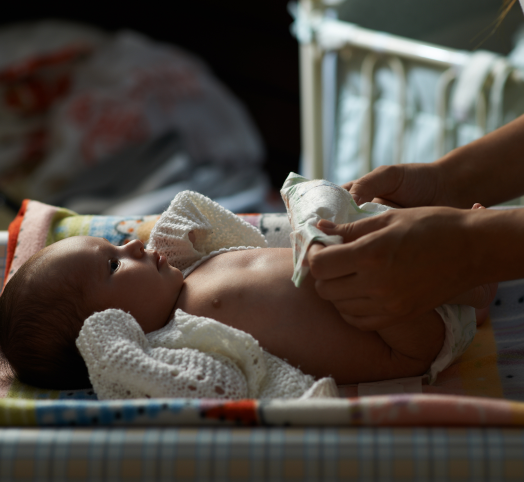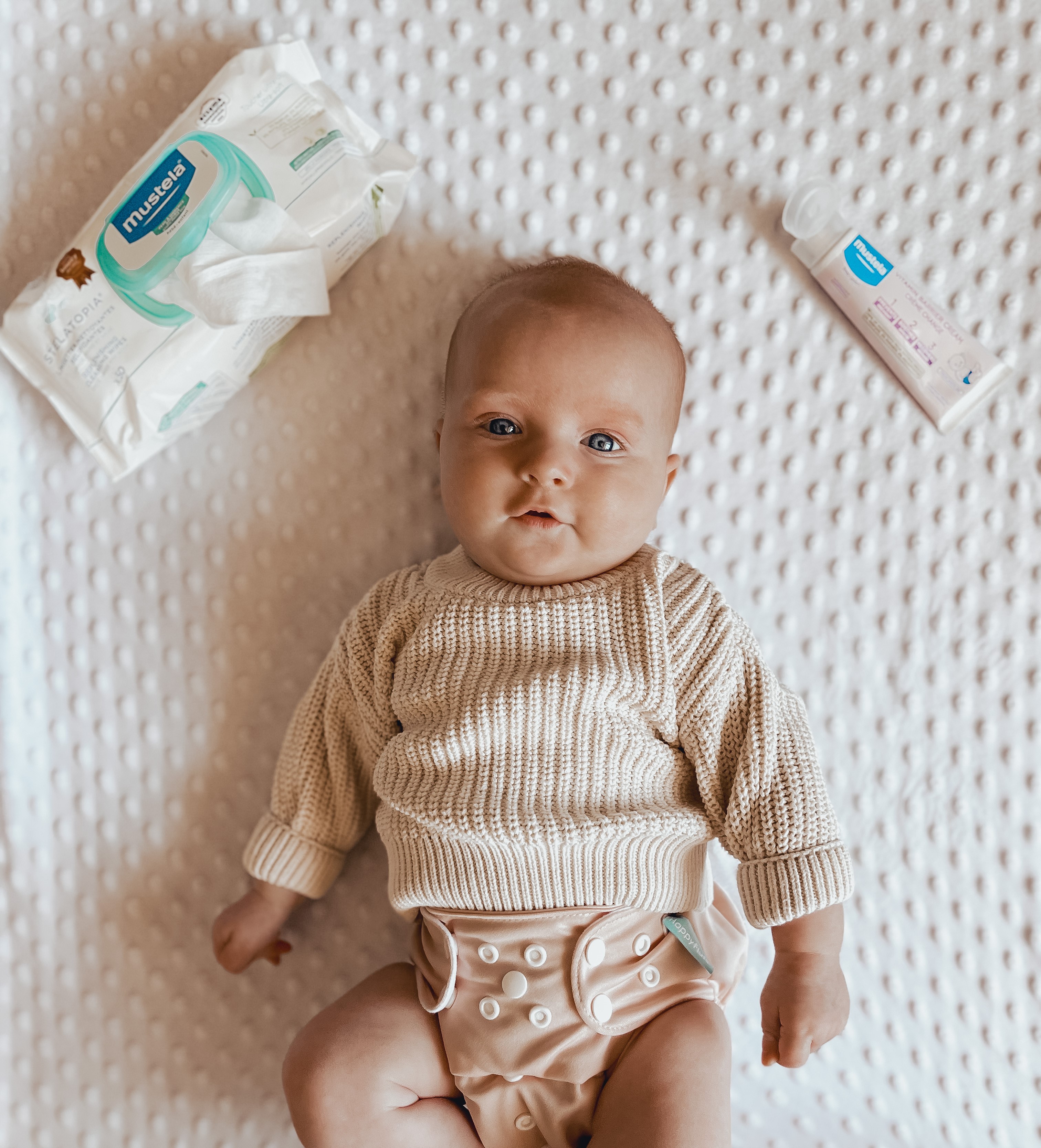4 Natural Nappy Rash Remedies That Actually Work
Updated on May 29, 2024
Created on June 26, 2023
3 Minutes to read
AU & NZ - Find your nearest pharmacy here
Updated on May 29, 2024
Created on June 26, 2023
3 Minutes to read

Nappy rash, scientifically known as irritant nappy dermatitis, includes any rash around your baby’s nappy area. And it’s quite common. At least 50 percent of little ones have a nappy rash at some point in their nappy-wearing years.
The following can be signs of run-of-the-mill nappy rash:
Pink or red, irritated skin
Puffy skin
Skin that’s warm to the touch
Small bumps
Rest assured that these symptoms are normal. Nappy rash is a treatable skin rash and can clear up in a few days with the right plan in place.
Just keep in mind that if your baby’s rash doesn’t clear up with regular nappy rash remedies, they might have a yeast nappy rash. Click here for more information.
If your baby’s nappy rash becomes more serious, you’ll need to head to your healthcare practitioner. Here are a few of the signs that it’s time to see a doctor:
Blisters
Sores
Pimples
Pus
Peeling skin
A yellow-colored rash
Cracked or bleeding skin
Fever
Very painful rash
The rash worsens after a couple of days of treatment
Assuming there’s nothing unusual about your baby’s rash, let’s discuss the natural nappy rash remedies you can use to soothe, calm, and protect your baby’s skin.
To start with, it's essential to give your baby some nappy-free time if they have a nappy rash. Nappies can trap moisture, creating a warm and moist environment that promotes the growth of bacteria, which can contribute to nappy rash.
When you and your little one are at home and have some time, consider allowing them to go without a nappy for a while. However, since there won't be a nappy to contain any urine or stool, you are probably wondering how to keep your place clean and dry.
You can place a towel or waterproof mat on the floor and gently lay your baby on it. Provide some entertainment, such as toys or a mirror, or join them on the floor for interactive playtime. This way, you can ensure a clean and dry space while allowing your baby to enjoy some nappy-free time.
If the weather is nice, grab a towel and have nappy-free time in the backyard. Just be sure that your baby is properly protected from the sun.
Expert Tip: If you have a baby boy, use a clean washcloth to cover his privates so he doesn’t pee on everything around him!
You may already be familiar with the benefits of using coconut oil on your own skin, but did you know that it can also be used for your baby's nappy rash? This incredible plant oil not only provides moisturisation but also possesses anti-microbial properties that can help in wound healing and support the skin's barrier function.
To apply coconut oil, ensure that your baby's skin is clean and dry, and then gently massage a small amount onto the affected area. You can repeat this process a few times a day to provide relief and promote healing.
There’s one natural nappy rash remedy that you always have on hand if you’re breastfeeding. That’s right — breast milk! And it’s a good option to treat regular nappy rash.
According to the Mayo Clinic, a study has indicated that breast milk is a safe and effective alternative to using one-percent hydrocortisone ointment for nappy rash treatment.
Simply apply a small amount of your milk onto your baby's skin, allowing it to dry before putting on a nappy.

Zinc oxide is a natural ingredient that offers remarkable benefits. This powerful component has the ability to soothe, soften, and moisturise the skin, helping in the healing process. It is widely used to address various skin conditions like eczema and acne. Moreover, zinc oxide plays a key role as the primary ingredient in mineral sunscreens, offering effective sun protection.
To use zinc oxide as a natural nappy rash remedy, choose a nappy cream that contains this mineral.
For example, Mustela Vitamin Barrier Cream 1 2 3 is composed of 98% plant-based ingredients, using zinc oxide in conjunction with sunflower oil distillate and avocado perseose to repair the skin barrier and protect your baby’s skin.
And, like all Mustela products, it’s free of parabens, phthalates, and phenoxyethanol.
As we mentioned earlier, nappy rash is very common and will affect most babies at some point. But there are a few preventive measures you can take every time you change your little one’s nappy.
As prolonged exposure to a wet or soiled nappy can cause irritation and make your baby's skin more vulnerable to nappy rash, it is important to prioritise frequent nappy changes.
Also, it's worth considering that the type of nappy you use may also contribute to skin irritation in your little one. If you suspect this to be the case, you can try switching to a different variety of disposable or cloth nappies to determine if there is a more suitable option that suits your baby's skin.
In order to promote a bacteria-free environment and prevent skin irritation, it is essential to ensure thorough cleaning of your baby's nappy area during each nappy change. Allow their skin to completely dry before applying a fresh nappy to their clean bottom.
When faced with particularly messy situations, you may want to consider giving your little one a brief bath. In such cases, you can effectively clean your baby's nappy area using options like micellar water. Our no-rinse cleansing water will sufficiently clean the area, without the need for a bath.
That brings us to our next and last point.
Whether you’re in the middle of treating a nappy rash or just in prevention mode, you’ll want to choose gentle, soothing baby wipes. That way, you won’t irritate healthy skin or further aggravate a nappy rash.
It is recommended to use wipes that are free of alcohol and fragrance. So, look no further than our Certified Organic Water Wipes with Cotton and Aloe.
Alcohol- and fragrance-free, these wipes are designed to gently cleanse your baby’s skin, leaving it soothed, soft, fresh, and moisturized.
Made with 99.8% ingredients of natural origin (such as organic cotton, organic aloe vera, and purified, softened water), these wipes are also vegan and biodegradable. But those aren’t the only reasons they’re good for the planet.
Our organic aloe vera is grown in the highlands of Mexico and comes from farms that meet fair-trade requirements. Meanwhile, the organic cotton we use is 100% recycled from the textile industry and part of a circular economy and anti-waste approach.
We’ve also ditched the plastic lid, reducing our plastic use by 47%.
When nappy rash strikes, turn to the natural nappy rash remedies we mentioned in this article. Allow your baby to go without a nappy, apply coconut oil or breast milk, and choose a nappy cream made with zinc oxide, such as Mustela Vitamin Barrier Cream 123.
By incorporating these natural remedies with the recommended nappy-changing practices, you can help ensure that your baby's skin remains healthy and smooth just like a baby’s bottom.